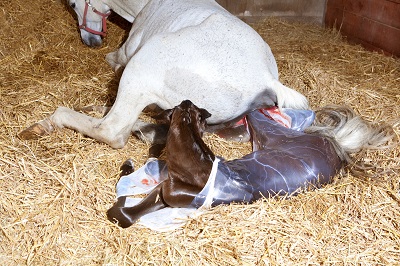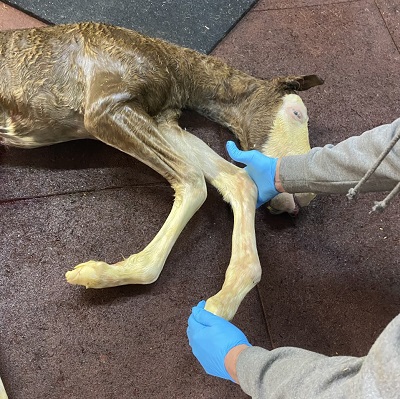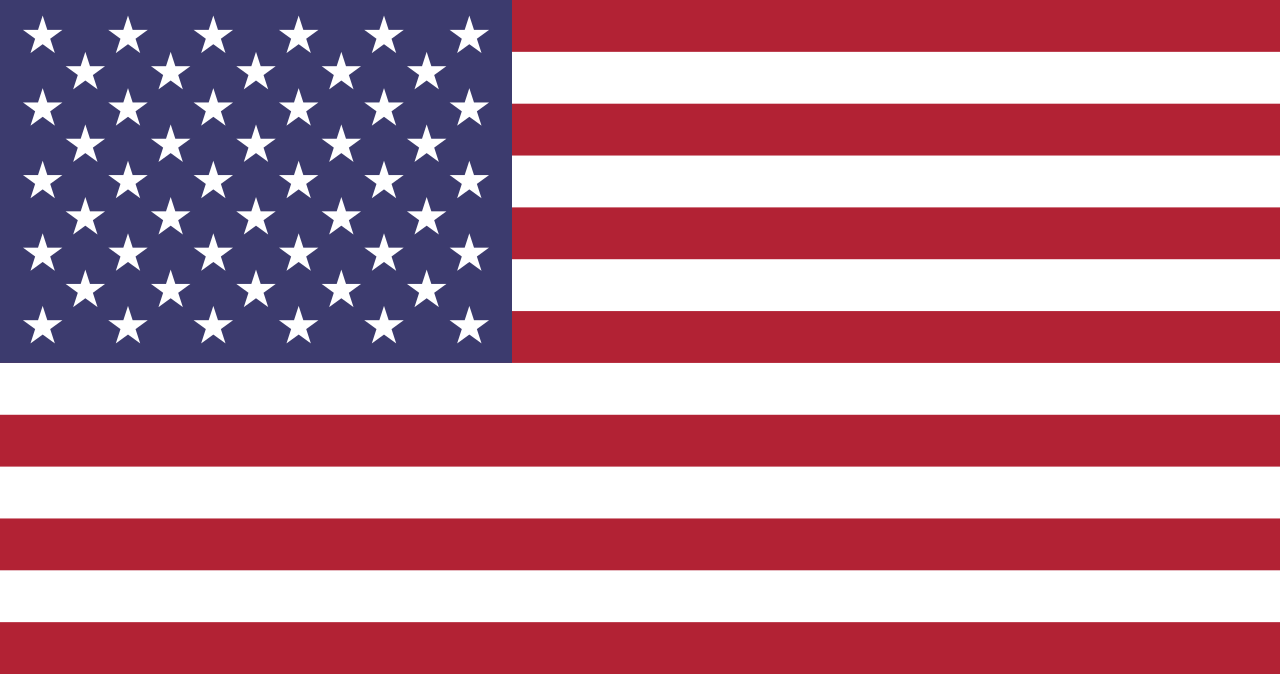 Congenital Hypothyroidism is a disease syndrome or process that is native to the Northwest Region of the United States. Dr. Jed McKinlay of McKinlay & Peters Equine Hospital in Colbert, WA wishes for us to share their firsthand knowledge about this issue because there is little documentation to be found. Though it has been observed in the field, it has never been repeated in clinical research. However, a number of risk factors have been identified; dos and don’ts to evade this problem. (Warning! An image in this article may be disturbing to some readers.)
Congenital Hypothyroidism is a disease syndrome or process that is native to the Northwest Region of the United States. Dr. Jed McKinlay of McKinlay & Peters Equine Hospital in Colbert, WA wishes for us to share their firsthand knowledge about this issue because there is little documentation to be found. Though it has been observed in the field, it has never been repeated in clinical research. However, a number of risk factors have been identified; dos and don’ts to evade this problem. (Warning! An image in this article may be disturbing to some readers.)
Risk Factors
The perfect storm occurs when one or more of the following risk factors occur in the same location.
- Low iodine in the feed or soil where hay is grown.
- Lack of mineral supplementation.
- Supplements with low or deficient iodine.
- Mares that are exposed to nitrates during gestation (which can block iodine capture). Nitrates can come from green oat hay, dugout water, well water, agricultural runoff, heavily fertilized fields, high nitrate feeds, and certain pasture weeds (pig weed for example).
- Mares exposed to goitrogens in mustard family plants including cultivated varieties (canola, rape and mustard seed plants or seeds can be in pastures, hays or seed can be found contaminating grain products) and weeds (ball mustard, blue mustard, jimmy hill mustard, shepherd's purse; a huge list here).
- Mares exposed to ergot in grain or forage (these toxins affect fetal thyroid function particularly), and may also slow fetal growth.
Clinical Signs
 The clinical signs we see with this disease are long gestational lengths. Some foals are born looking pre-mature even in the face of the long gestation. They may have contracted tendons, long lower jaws, undeveloped or underdeveloped cuboidal bones in the knees and hocks tending to angular limb deformities. The foals want to drink and live but many are unable to stand and nurse properly. Many foals are immediately hypothermic (they get very cold and can’t warm themselves up) when born.
The clinical signs we see with this disease are long gestational lengths. Some foals are born looking pre-mature even in the face of the long gestation. They may have contracted tendons, long lower jaws, undeveloped or underdeveloped cuboidal bones in the knees and hocks tending to angular limb deformities. The foals want to drink and live but many are unable to stand and nurse properly. Many foals are immediately hypothermic (they get very cold and can’t warm themselves up) when born.
How to Avoid This Disease
The best insurance against this disease is to avoid as many of the abovementioned risk factors as possible. Also, make sure there is adequate bioavailable iodine and other trace minerals including selenium, zinc and copper. It is best to avoid weeds in hay or pasture as much as possible. The toxins may be particularly high in weeds and plants during the early (springtime) stages of growth.
We hope the above information helps mare owners avoid this heartbreaking moment when their foals are born. By providing this information to everyone, the hope of the veterinarians at McKinlay & Peters Equine Hospital is that no one will have to see another case of it again.


Log in to join the conversation.